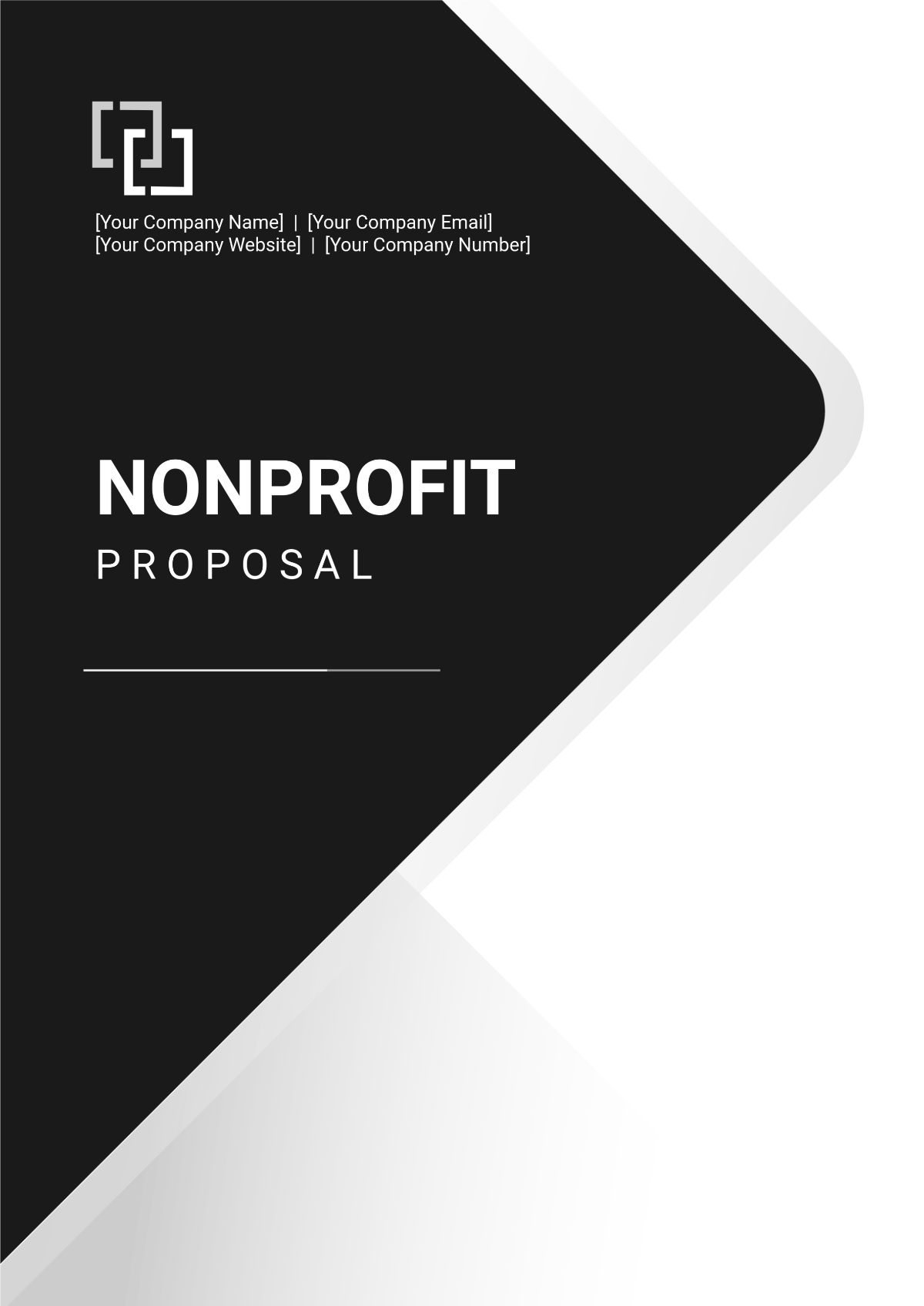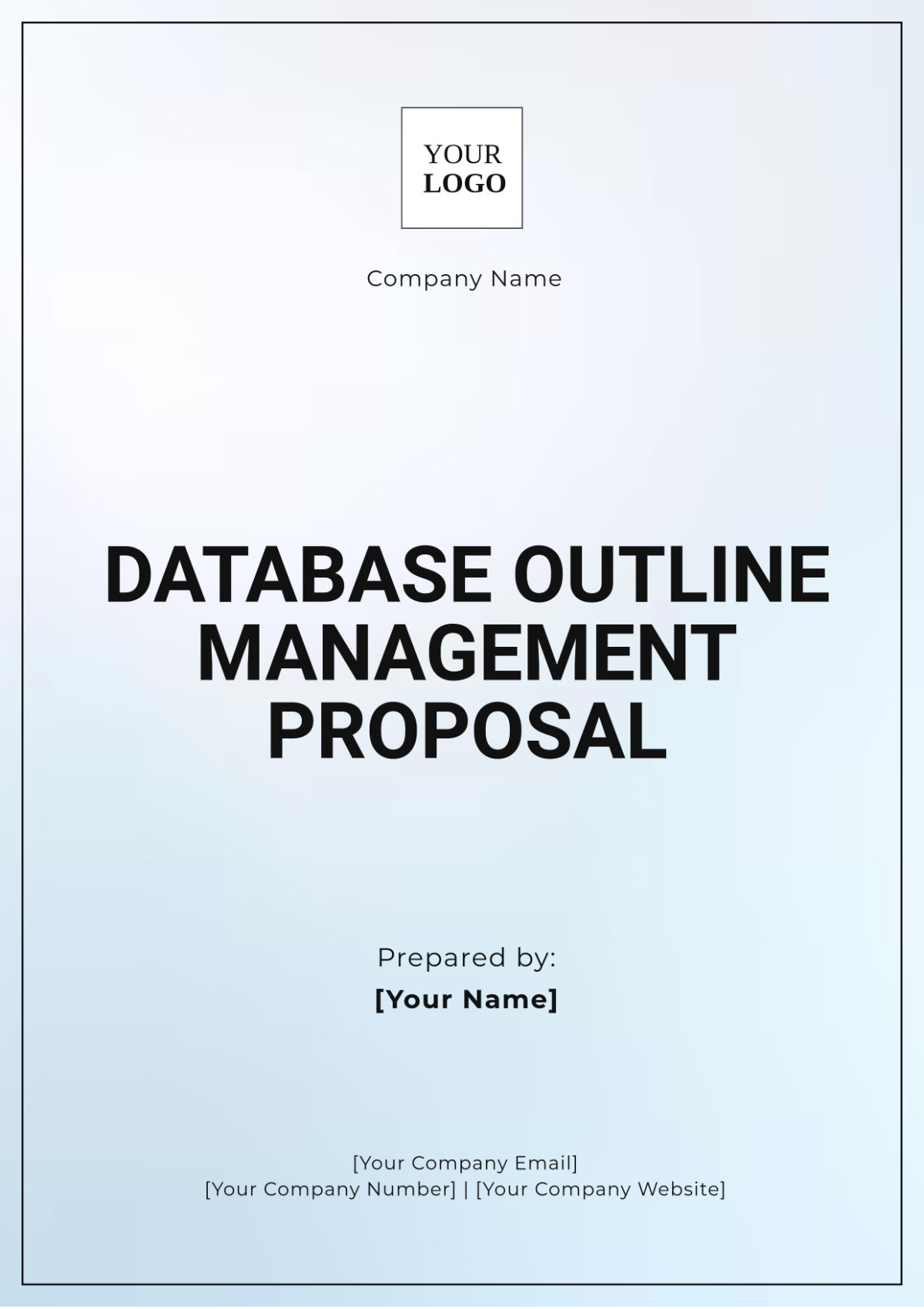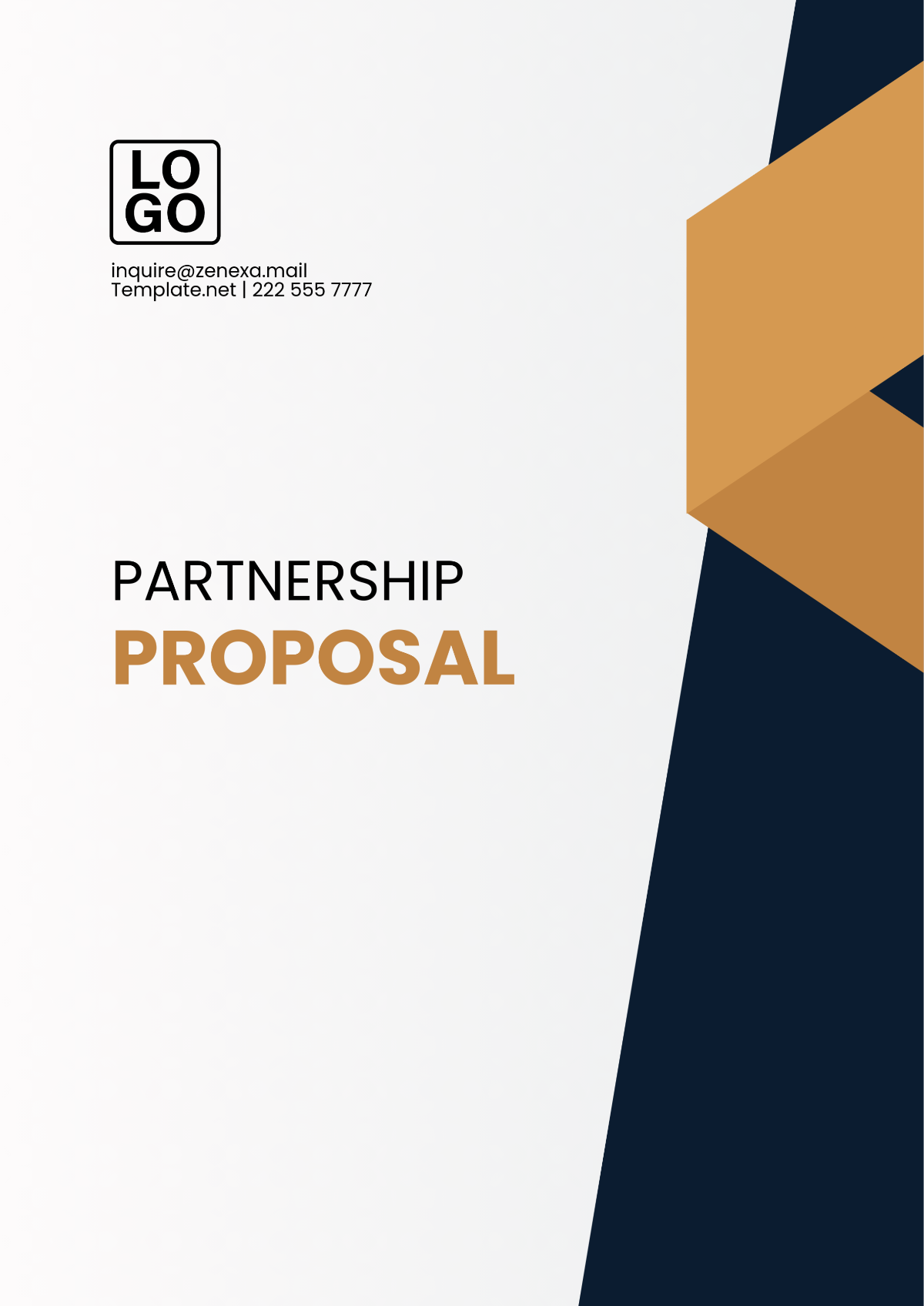Solution Proposal Brief
Prepared By: [YOUR NAME]
Company: [YOUR COMPANY NAME]
Executive Summary
This Solution Proposal Brief outlines a comprehensive strategy to address a specific challenge faced by our organization. Through meticulous analysis and strategic planning, we present a solution that promises to enhance efficiency, reduce costs, and elevate overall performance. This brief encapsulates the rationale, methodology, benefits, and implementation plan of the proposed solution, aiming to garner support and approval from senior management.
Introduction
In today's dynamic business landscape, organizations constantly encounter challenges that demand innovative solutions. This proposal seeks to tackle one such challenge that has been identified within our organization, impacting our operational effectiveness and hindering our ability to achieve optimal outcomes.
Problem Statement
The problem at hand revolves around [specifically articulate the challenge or issue faced by the organization]. This obstacle has been identified as a significant barrier to our progress and requires immediate attention to ensure sustained growth and competitiveness in the market.
Solution Overview
Our proposed solution leverages cutting-edge technology and strategic methodologies to tackle the root causes of the identified challenge. Through a multifaceted approach, we aim to streamline operations, enhance efficiency, and drive sustainable success. Key features of our solution include:
Integrated Workflow Automation: Implementing state-of-the-art workflow automation tools to streamline processes and eliminate inefficiencies across departments.
Data Analytics and Insights: Utilizing advanced data analytics techniques to gain actionable insights into operations, customer behavior, and market trends, enabling informed decision-making.
Cross-Functional Collaboration Platform: Introducing a collaborative platform that facilitates seamless communication and collaboration among teams, breaking down silos and fostering innovation.
Continuous Improvement Framework: Establishing a framework for continuous improvement, where feedback loops and performance metrics drive ongoing optimization and refinement of processes.
Change Management Strategies: Implementing robust change management strategies to ensure a smooth transition and adoption of the new solution by stakeholders at all levels of the organization.
Benefits and Outcomes
Upon successful implementation, our solution is anticipated to yield significant benefits across various facets of our organization. Specifically, the benefits and outcomes include:
Enhanced Operational Efficiency: By streamlining workflows, automating repetitive tasks, and optimizing resource allocation, our solution will enhance operational efficiency. This will result in smoother processes, reduced wastage of resources, and faster turnaround times for key tasks and projects.
Cost Savings through Optimized Processes: Through the identification and elimination of inefficiencies, redundant processes, and unnecessary expenditures, our solution will generate substantial cost savings. This will be achieved by reducing operational overheads, minimizing resource wastage, and optimizing procurement processes.
Improved Customer Satisfaction and Retention: By enhancing the quality and consistency of our products/services, addressing customer pain points, and offering personalized experiences, our solution will significantly improve customer satisfaction and retention rates. This will lead to increased loyalty, positive word-of-mouth referrals, and ultimately, sustainable business growth.
Increased Productivity and Profitability: Through the implementation of more efficient workflows, improved collaboration tools, and targeted performance incentives, our solution will drive a marked increase in productivity levels across the organization. This heightened productivity will translate directly into improved profitability, as we capitalize on enhanced operational efficiency and customer satisfaction to drive revenue growth and reduce costs.
Enhanced Decision-Making: By providing stakeholders with access to real-time data, advanced analytics, and predictive insights, our solution will empower informed decision-making at all levels of the organization. This will enable us to identify emerging trends, capitalize on new opportunities, and proactively address potential risks, thereby enhancing our competitive edge in the market.
Compliance and Risk Management: Our solution will also strengthen our compliance processes and risk management capabilities by centralizing data, automating compliance checks, and implementing robust risk mitigation strategies. This will ensure regulatory adherence, protect against potential liabilities, and safeguard our reputation in an increasingly stringent regulatory environment.
Stakeholder Analysis
Key stakeholders involved in or impacted by the proposed solution are integral to its successful execution. Understanding their perspectives, interests, and influence is paramount for garnering their support. The following stakeholders have been identified along with their respective roles and interests:
Senior Management Team (SMT):
Roles: Decision-makers responsible for approving and allocating resources for strategic initiatives.
Interests: Interested in solutions that align with organizational objectives, improve overall performance, and demonstrate a positive return on investment (ROI).
Department Heads:
Roles: Leaders of departments directly affected by the proposed solution.
Interests: Interested in solutions that enhance departmental efficiency, streamline processes, and contribute to achieving departmental goals.
Operations Team:
Roles: Frontline staff responsible for implementing and executing the proposed solution.
Interests: Interested in solutions that simplify workflows, reduce workload, and improve productivity without causing disruptions to daily operations.
IT Department:
Roles: Responsible for providing technical support and infrastructure necessary for implementing the proposed solution.
Interests: Interested in solutions that integrate seamlessly with existing systems, ensure data security, and comply with IT policies and standards.
Finance Department:
Roles: Responsible for budgeting and financial planning.
Interests: Interested in solutions that offer cost savings, demonstrate a positive ROI and align with budgetary constraints.
End-users/Customer Service Representatives:
Roles: Directly interact with the solution and its outputs, impacting customer experience.
Interests: Interested in solutions that improve user experience, streamline processes, and enable them to better serve customers.
External Suppliers/Partners:
Roles: Provide products, services, or support that may be impacted by the proposed solution.
Interests: Interested in solutions that maintain positive relationships, ensure continuity of service, and foster collaboration.
Implementation Plan
Timelines and Milestones:
Phase 1: Preparation (Month 1)
Establish project team and roles.
Conduct initial stakeholder meetings to outline objectives and expectations.
Finalize project scope, goals, and deliverables.
Phase 2: Research and Analysis (Months 2-3)
Gather data and conduct an in-depth analysis of the problem.
Identify root causes and potential solutions.
Engage with relevant stakeholders for feedback and input.
Phase 3: Solution Development (Months 4-6)
Develop prototypes or mockups of the proposed solution.
Test solution in controlled environments.
Refine solution based on feedback and testing results.
Phase 4: Implementation (Months 7-9)
Roll out the solution to a pilot group or department.
Monitor performance and gather feedback.
Make necessary adjustments and refinements.
Phase 5: Full Deployment (Months 10-12)
Scale up implementation across the organization.
Provide training and support to end-users.
Ensure smooth transition and integration of the solution into existing workflows.
Resource Allocation and Requirements:
Human Resources:
Project Manager: Responsible for overall project coordination and communication.
Development Team: Comprised of developers, designers, and analysts.
Subject Matter Experts: Provide domain-specific knowledge and guidance.
Implementation Team: Assist with deployment and training.
Technological Resources:
Software and Hardware: Identify and procure necessary tools and equipment.
IT Support: Ensure the availability of technical support throughout the implementation process.
Financial Resources:
Budget Allocation: Estimate costs associated with development, testing, and deployment.
Contingency Fund: Set aside funds for unexpected expenses or contingencies.
Roles and Responsibilities:
Project Manager:
Oversee the entire implementation process.
Coordinate with stakeholders and team members.
Ensure adherence to timelines and milestones.
Development Team:
Design and develop the proposed solution.
Conduct testing and troubleshooting.
Collaborate with stakeholders for feedback and iteration.
Implementation Team:
Assist with the deployment and rollout of the solution.
Provide training and support to end-users.
Address any issues or concerns during the implementation phase.
Stakeholders:
Provide input and feedback throughout the process.
Support the implementation efforts by allocating resources and facilitating communication.
Risk Analysis
Technology Risks:
Description: Integration of new technology may encounter compatibility issues with existing systems.
Mitigation Strategy: Conduct thorough compatibility testing before implementation and have contingency plans in place for potential disruptions.
Resource Constraints:
Description: Limited availability of skilled personnel or budgetary constraints may impact project timelines and quality.
Mitigation Strategy: Regularly monitor resource utilization and adjust project plans as needed. Consider outsourcing or training programs to address skill gaps.
Change Management Resistance:
Description: Employees may resist adopting new processes or technologies, leading to resistance and reduced productivity.
Mitigation Strategy: Implement a comprehensive change management strategy that involves clear communication, training, and incentives to encourage buy-in and adoption.
Regulatory Compliance:
Description: Changes in regulatory requirements or non-compliance may result in legal implications or fines.
Mitigation Strategy: Stay updated on relevant regulations and ensure the proposed solution complies with all applicable laws. Have legal counsel review the implementation plan to mitigate legal risks.
Data Security Breaches:
Description: Vulnerabilities in data security protocols may lead to breaches, compromising sensitive information.
Mitigation Strategy: Implement robust data encryption measures, conduct regular security audits, and provide training on data security best practices to mitigate the risk of breaches.
Vendor Reliability:
Description: Dependence on third-party vendors for technology or services may pose risks related to reliability, performance, or contractual obligations.
Mitigation Strategy: Conduct thorough due diligence before engaging vendors, including assessing their track record, reliability, and contractual terms. Have contingency plans in place for vendor failures or disruptions.
Scope Creep:
Description: Uncontrolled expansion of project scope may lead to delays, increased costs, and diminished project quality.
Mitigation Strategy: Establish clear project scope boundaries and change management processes to assess and approve any scope changes. Regularly review project progress against defined scope to identify and address potential scope creep.
Natural Disasters or External Events:
Description: Unforeseen events such as natural disasters or geopolitical disruptions may impact project timelines or resources.
Mitigation Strategy: Develop contingency plans for potential disruptions, including alternative work arrangements, backup systems, and insurance coverage where applicable.
Cost-Benefit Analysis
A thorough cost-benefit analysis demonstrates the financial viability and return on investment of the proposed solution. By comparing the anticipated costs against the expected benefits, we aim to showcase the value proposition of our solution.
Anticipated Costs | Amount ($) |
|---|---|
Initial Investment | $100,000 |
Software Acquisition | $50,000 |
Hardware Upgrades | $30,000 |
Infrastructure Enhancements | $20,000 |
Implementation Costs | $50,000 |
Staff Training | $15,000 |
Consultant Fees | $25,000 |
Additional Resources | $10,000 |
Annual Operational Costs | $45,000 |
Maintenance and Support | $20,000 |
Licensing Fees | $15,000 |
Additional Staffing | $10,000 |
Total Annual Operational Costs | $45,000 |
Expected Benefits | Amount ($) |
|---|---|
Increased Efficiency | $36,000 |
Cost Savings | $50,000 |
Total Expected Benefits | $86,000 + X |
Net Benefit Calculation:
Net Benefit = (Total Expected Benefits) - (Total Anticipated Costs)
Net Benefit = ($86,000 + X) - ($195,000)
Note: X represents additional benefits not directly quantifiable in monetary terms.
Measurement and Evaluation
To gauge the effectiveness and impact of our proposed solution, we have meticulously defined key performance indicators (KPIs) and established a framework for ongoing evaluation and monitoring. The following KPIs will serve as benchmarks for measuring progress and success:
Operational Efficiency Improvement: Percentage increase in efficiency across identified processes compared to the baseline.
Cost Reduction: Total cost savings achieved through the implementation of the solution, broken down by operational areas.
Customer Satisfaction: Net Promoter Score (NPS) or Customer Satisfaction Score (CSAT) reflects improvements in customer satisfaction levels post-implementation.
Employee Productivity: Average time saved per employee per task or process, indicating enhanced productivity levels.
Revenue Growth: Percentage increase in revenue attributed directly to the implementation of the solution.
Quality Metrics: Reduction in error rates, defects, or rework instances, showcasing improvements in quality standards.
Adoption Rate: Percentage of users or departments actively utilizing the new solution compared to the total potential user base.
Return on Investment (ROI): Ratio of the net benefits gained from the solution compared to the total investment made.
Time-to-Completion: Average time taken to complete tasks or processes post-implementation, demonstrating improved efficiency.
Compliance Metrics: Percentage compliance with relevant regulations, policies, or standards, ensuring alignment with organizational requirements.
Evaluation Process:
Regular evaluation and monitoring of these KPIs will be conducted at predefined intervals throughout the implementation phase and beyond. This process will involve:
Data Collection: Gathering relevant data from internal systems, surveys, and feedback mechanisms.
Analysis: Analyzing collected data to assess performance against defined KPIs and identify areas of improvement or concern.
Reporting: Generating comprehensive reports detailing progress, achievements, and any deviations from expected outcomes.
Action Planning: Based on the analysis, develop action plans to address identified issues or capitalize on opportunities for optimization.
Stakeholder Communication: Communicating evaluation results and action plans to relevant stakeholders, fostering transparency and accountability.Recommendation and Next Steps
Continuous Improvement:
The evaluation process will be iterative, fostering continuous improvement by incorporating stakeholder feedback and adapting strategies to align with organizational objectives. By rigorously measuring progress against predefined KPIs, we ensure informed decision-making to maximize outcomes throughout the solution implementation.
















































